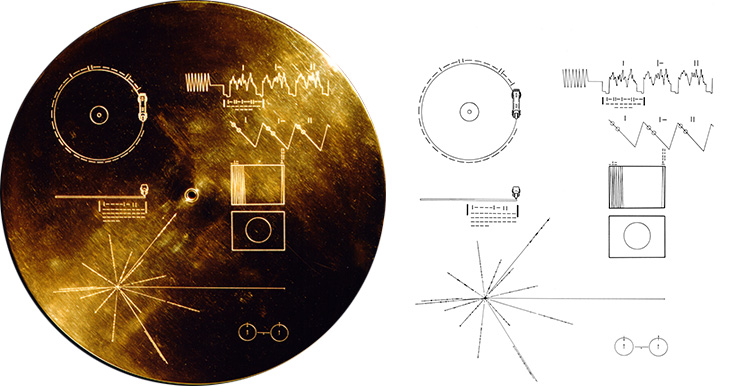Royal is one of my favorite typewriter brands. I have all the greats; No. 10, HH, FP, tons of portables. They may not be the prettiest typewriters, but they are very numerous. Did you know that Royal also dipped their toes into computer technology? It's true, but the world of office typewriters and data technology is was not too much of a departure for the largest typewriter company ever. The story is long and complicated and I hope to share some things I learned about this computer.
The Beginning
Not surprisingly, Royal didn't make this typewriter computer themselves. Dr. Stan Frankel working for Librascope of Glendale, CA designed the computer. Librascope manufactured it and presented it at the Automation Show and Computer Clinic show in Chicago.
 |
| Paul Kane, in the story to the right , looks like he is not enjoying the Holiday activities. |
I can only imagine that Royal sent their VP of R&D (E. H. Dreher) and Senior Project Engineer (I. S. Lerner) to the show with the mission of finding a computer for Royal McBee. They saw this computer from a small engineering outfit owned by a large defense contractor and designed by a little-known computer pioneer. The negotiations are lost to history, but in the end Royal McBee made a move that secured the LGP-30 as a part of the Royal product line.

General Precision and Royal would form a new company called Royal Precision and General Precision's Librascope subsidiary would make the computers. (I want to say that Royal Precision is the best name for a computer company ever devised by the mind of man.) Royal would handle the marketing and sales and develop peripherals for the computer. GPE/Librascope would make the computers and create software. Having recently acquired the Robotyper, Royal had some interesting technology and patents to work with sop peripherals made sense. In addition, Royal had hundreds of sales offices and a sales force that was experienced in getting machines into business settings.
 |
| Robotypers worked by having ghostly triplet secretaries marked for death typing on spectral typewriters. |
Royal McBee transferred Librascope application engineers to their payroll and started training people how to code for the new computer.
One of the Application Engineers (and programming school instructors) was a man called Mel Kaye who would later go down in computer computer folklore in
The Story of Mel.
The Machine
Royal's computer by the standards of the time was better than a desk calculator, but not as good as some of the big iron starting to become available. It was a small (desk-sized) general purpose 32-bit (sort-of) word binary computer.
 |
| White sock alert! |
As with all old computers, the specifications are amazingly meager:
| Type: | General purpose, electronic, digital, single address, fixed binary point, fractional, stored program |
| Number Base: | 2 (binary) |
| Word Length: | 9 decimal digits plus sign (30 binary bits plus sign bit and spacer bit) |
| Mode of Operation: | Serial (Settle in with a cup of tea!) |
| Memory: | Magnetic drum, 4096 words, 3 one word recalculating registers. |
| Clock Frequency: | 120 KC (0.00012 GHz is my math correct?) |
| Access Time: | 2 ms. minimum, 17 ms. maximum |
| Transfer Time: | 1 ms. minimum, 17 ms. maximum |
| Addition Time: | .26 ms. excluding access time |
| Multiplication or Division Time: | 17 ms. excluding access time |
| Input-Output: | Paper tape or electric typewriter |
| Size: | Depth - 26", Length - 44", Height - 33" |
| Weight Uncrated: | 740 lbs |
| Cooling System: | Internal forced air blower |
| Heat Dissipation: | 5000 B.T.U. /hr. |
| Power Requirement: | 115-volt, 60-cycle, single phase, 13 ampere alternating current |
| Number of Tubes: | 113 |
| Number of Diodes: | 1350 |
These specifications come from the
LGP-30 Programming Manual.
To save money on memory, this computer used a magnetic drum for RAM. It's akin to using your disk for swap, but in this case it was all swap!
Magnetic drum memory was slow, but with optimization the Librascope boffins were able to get the latency down from 17(microseconds) to 2 microseconds through the careful arrangement of data on the drum. We are all very spoiled with our fast computers, but 2ms seems pretty fast to me. On another note, I don't know what that drum sounded like spinning at 3700 rpm, but I bet it was loud.
For input/output Librascope used a Friden Flexowriter. I think the overall aesthetics would have been helped with a Royal, but the Flexowriter was common terminal for early computers.
It wasn't much in the way of a computer, but for many colleges and engineering firms it offered the possibility of owning a computer versus renting one from IBM. IBM had notoriously strict lease agreements that would charge a user for anything outside the lease agreement. Big IBMs had panel meters that counted the number of hours in operation. In other words, if you leased a computer for 8 hours a day, any use beyond that 8 hours would incur a fee. Sure, IBM was the name in computers, but cost can definitely be a motivator. In the end, over 500 of these computers were sold.
In this post, I only scratched the surface of this old Royal computer. There is folklore (as mentioned earlier), emulation, and restoration and I plan on taking a deeper dive into this amazing piece of computer history.






































